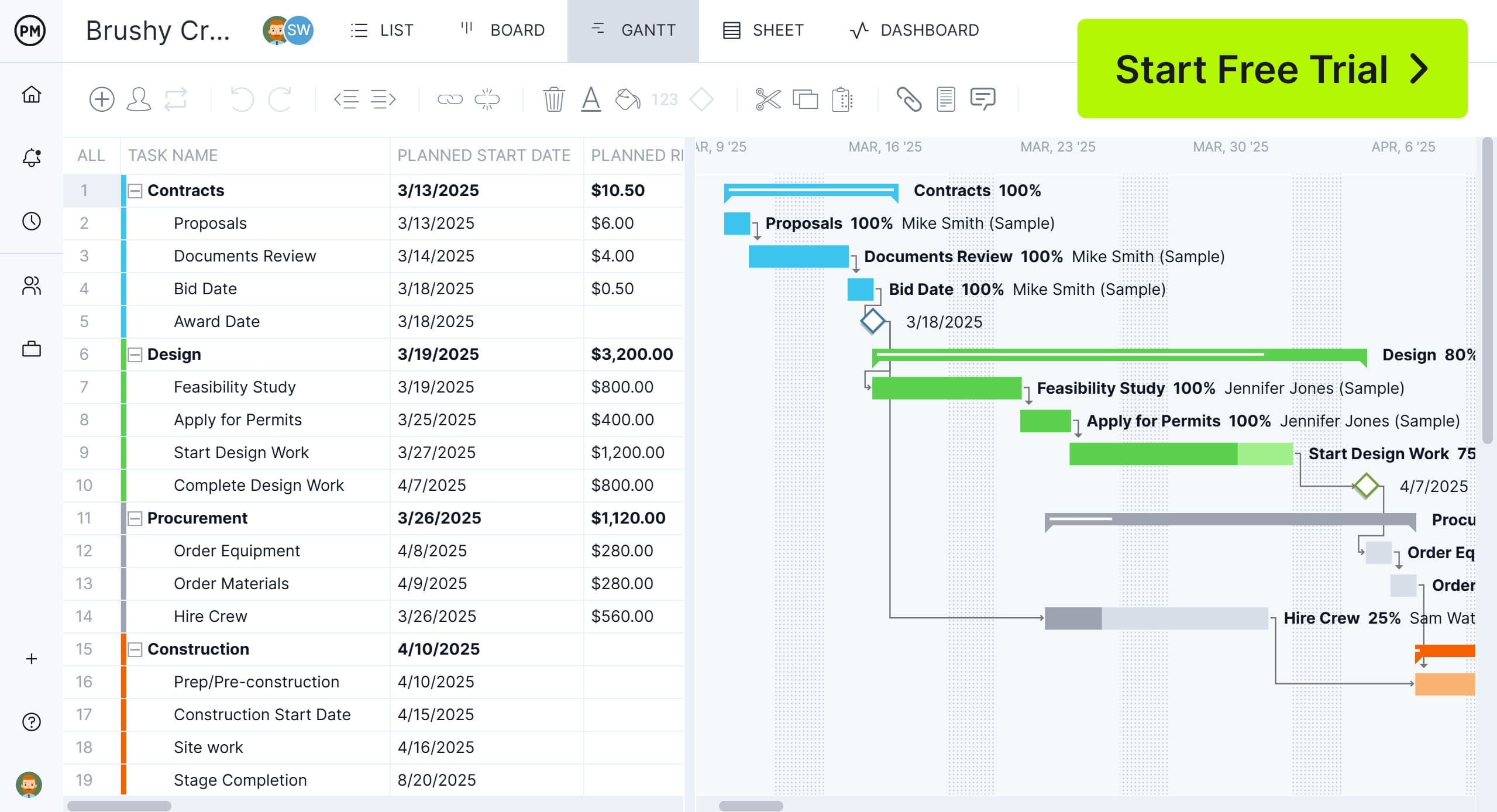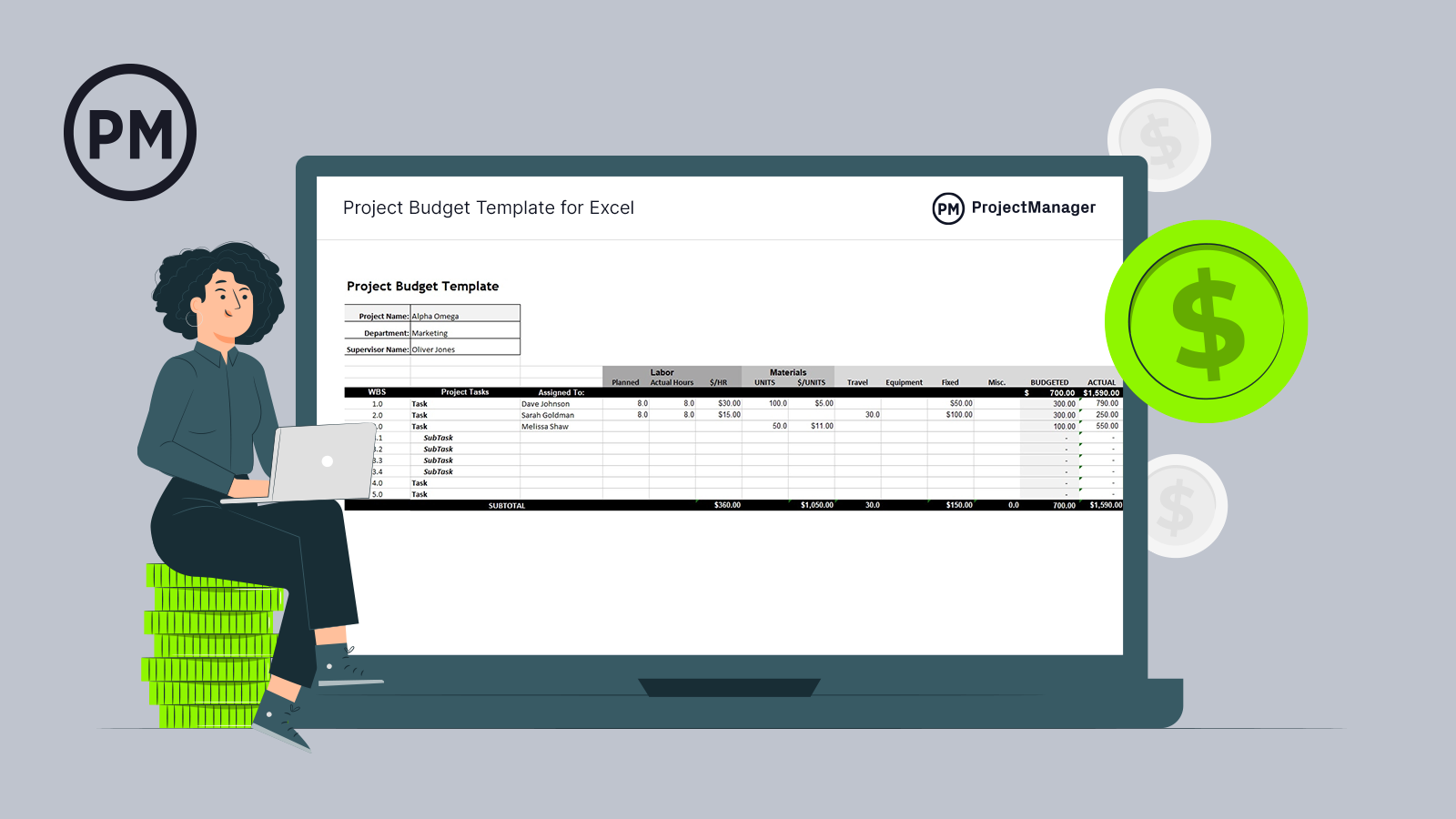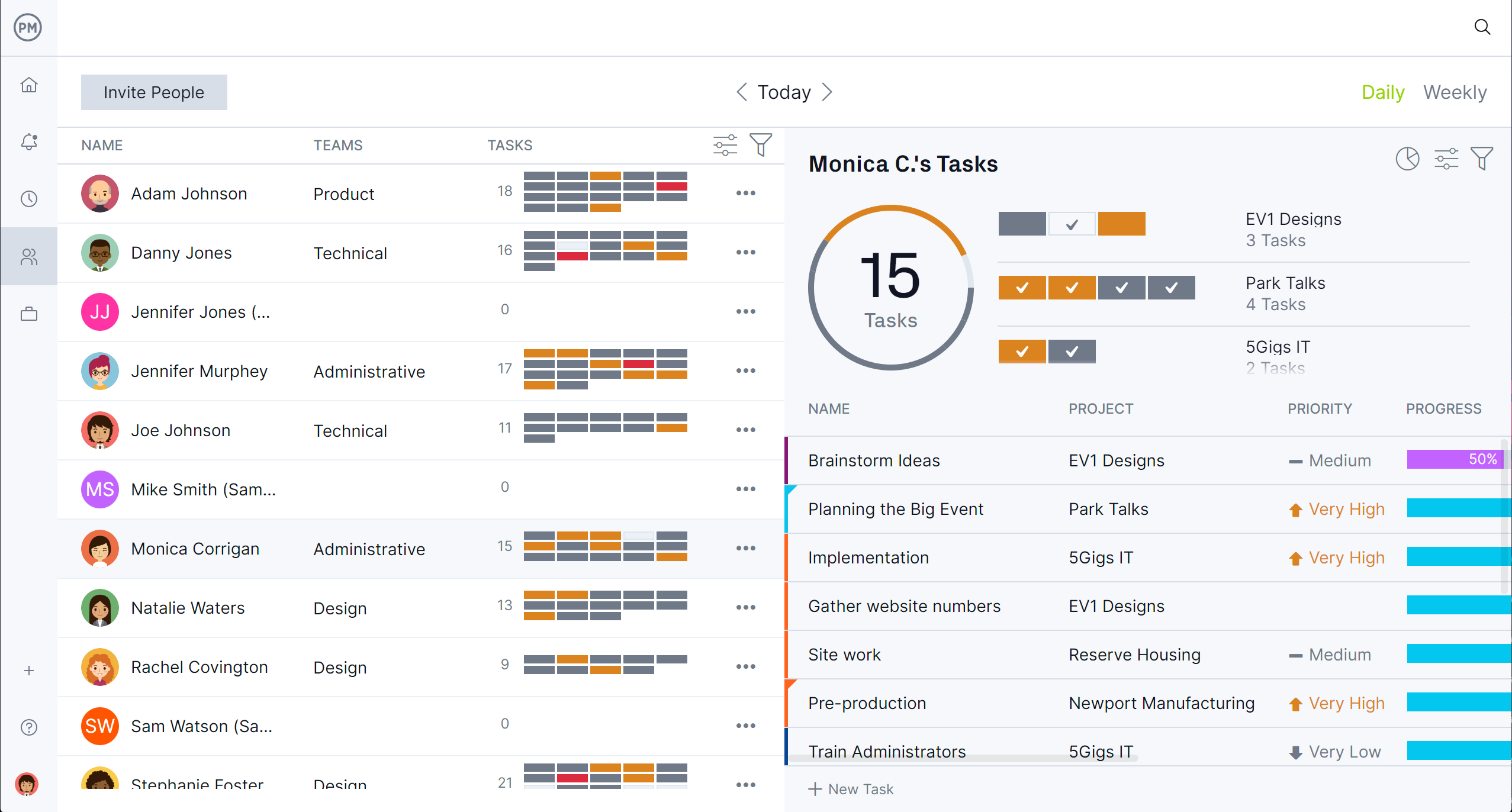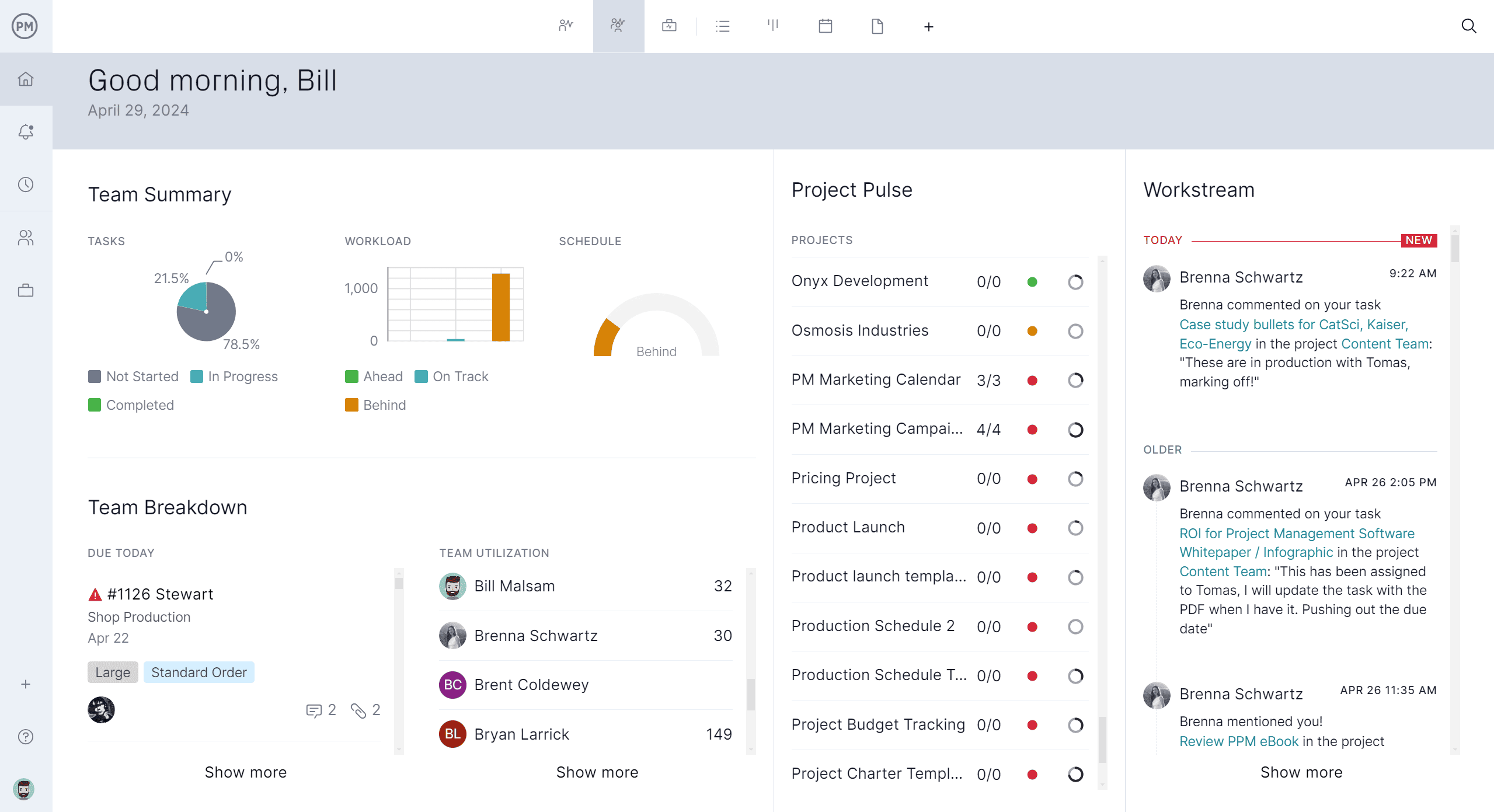In project management, even the best-laid plans are vulnerable to change. From unexpected delays to unplanned expenses or resource shortages, projects often face disruptions that can derail timelines and budgets. That’s where a contingency reserve comes in.
Acting as a buffer against the unknown, contingency resources help project teams stay flexible and responsive when challenges arise. We’ll explore what project risks should be covered, what contingency resources are and why they matter to support stronger, more resilient project planning.
What Is a Contingency Reserve?
A contingency reserve is a specific allocation of time, money or resources set aside within a project budget or schedule to address identified risks that might impact the project if they occur. These reserves are developed during the planning phase based on a formal risk analysis and are intended to cover known unknowns—issues that are anticipated but uncertain regarding timing or impact.
In terms of cost, a contingency reserve might be a monetary buffer built into the project budget to address price fluctuations or additional labor if certain tasks take longer than expected. For schedule management, it could mean adding buffer time between tasks or milestones to account for potential delays due to weather, supplier issues or technical problems. A contingency reserve makes a project more resilient and allows the project team to stay on track without requiring constant stakeholder approvals for minor adjustments.
The contingency reserve plays an important role in shaping the project timeline on a Gantt chart. Extra time allocated for certain tasks or phases appears as buffer periods or slack built into the chart.
This helps make the Gantt chart more realistic by visualizing potential delays without shifting the overall project deadline prematurely. By incorporating contingency reserves into the Gantt chart, project managers can better communicate risk preparedness, improve transparency with stakeholders and maintain schedule integrity even when setbacks arise.
ProjectManager is award-winning project and portfolio management software with robust Gantt charts that can plan for a contingency reserve and much more. Like any Gantt chart, it can schedule tasks, resources and cost. Unlike others, ours can also link all four types of task dependencies to avoid cost overruns, filter for the critical path to identify essential tasks and slack, plus set a baseline to track progress in real time. Get started with ProjectManager today for free.

Why Is It Important to Include a Contingency Reserve in a Project Budget?
Including a contingency reserve in a project budget is crucial because it provides a financial buffer to absorb unexpected costs without jeopardizing the entire project. No matter how thorough the planning, unforeseen challenges—such as vendor delays, price increases, technical issues or regulatory changes—can and often do arise.
A contingency reserve ensures that the project team can respond to these risks swiftly without seeking emergency funding or compromising scope or quality.
Beyond handling specific risks, a contingency reserve also promotes fiscal discipline and stakeholder confidence. It demonstrates that the project has been responsibly planned with a risk-aware mindset.
When stakeholders see a contingency built into the budget, they are more likely to trust that the project team is prepared to manage uncertainty. Ultimately, including a contingency reserve helps maintain momentum, reduce disruptions and improve the likelihood of completing the project on time and on budget.

Get your free
Project Budget Template
Use this free Project Budget Template to manage your projects better.
Get the Template
What Project Risks Should Be Covered by a Contingency Reserve?
A contingency reserve should be used to cover known project risks—those that have been identified and analyzed during the project planning phase. These are typically events with a reasonable likelihood of occurring and a measurable potential impact. Some common types of project risks that should be covered by a contingency reserve include the following.
- Fluctuations in the Price of Project Resources: These are unexpected increases in the cost of labor, materials or equipment due to market volatility, inflation or supply chain constraints. If prices rise after the budget is set, the contingency reserve helps absorb the added expense without affecting other areas of the project.
- Schedule Delays: These are setbacks in the project timeline caused by external or internal factors, such as supplier delays, weather conditions or resource unavailability. Contingency reserves account for the cost implications of pushing back deadlines or extending work hours.
- Quality Rework Costs: If work fails to meet quality standards, it may need to be redone, which incurs additional labor and material costs. A contingency reserve helps cover these unexpected expenses so that quality corrections don’t derail the overall budget.
- Unanticipated Resource Needs: Sometimes a project requires more personnel, equipment or time than initially estimated, due to under-scoping or changing requirements. The contingency reserve allows for scaling up resources temporarily without major disruptions.
- Regulatory or Permit Delays: Delays in obtaining necessary permits or complying with updated regulations can halt progress or require design changes. A contingency reserve can help cover costs associated with these interruptions or modifications.
- Contractor Underperformance: If a contractor delivers subpar work, misses deadlines or needs to be replaced, additional funds may be required to manage the transition or correct deficiencies. The reserve provides financial flexibility to address these situations.
- Equipment Breakdowns: Unexpected machinery or equipment failures can stop work and require urgent repairs or replacements. These costs are not always anticipated and can be mitigated through a well-funded contingency reserve.
- Logistical Issues: Problems with transportation, storage or delivery of materials can result in idle time or the need for expedited shipping. Contingency reserves help manage these unexpected logistical hurdles without major cost overruns.
- Project Crashing: This refers to accelerating a project timeline by adding extra resources or shifts, usually to meet a deadline after a delay. Crashing increases costs and a contingency reserve can offset the additional expense without needing to reallocate core funds.
Who Calculates a Contingency Reserve?
The project manager typically owns a contingency reserve, often in collaboration with key stakeholders such as the project team, risk management specialists and sometimes finance or cost control experts. The goal is to estimate a realistic reserve based on identified risks, their likelihood and potential impact on the project’s budget or schedule.
- Project Manager: Oversees the risk assessment process and leads the development of the contingency reserve as part of the overall project planning. They are responsible for aligning the reserve with the project scope, schedule and cost baseline.
- Risk Management Team or Specialist: Helps identify, assess and quantify risks using techniques like qualitative and quantitative risk analysis. Their input ensures that the reserve is based on data-driven risk exposure.
- Cost Estimators or Finance Professionals: Assist in converting risk impacts into monetary values and ensure the contingency reserve fits within broader financial constraints and reporting standards.
- Stakeholders and Sponsors: May review or approve the proposed reserve to ensure it aligns with organizational risk tolerance and funding availability.
How to Calculate a Contingency Reserve
A contingency reserve should be calculated through a structured and analytical process that aligns with your project’s unique risks and objectives. Rather than guessing or applying a generic percentage, project managers should rely on risk management principles to ensure the reserve is sufficient and justifiable. Below are four key steps to guide this process.
1. Identify All Potential Project Risks
Begin by conducting a comprehensive risk identification process. This involves brainstorming with the project team, reviewing similar past projects and analyzing the project environment to uncover risks that could affect the project’s cost, schedule or performance. Tools like SWOT analysis, expert judgment and checklists can support this step.
2. List Potential Project Risks in a Risk Register
Document each identified risk in a risk register, a tool that tracks risk details such as descriptions, causes, probability, impact and response strategies. The risk register helps quantify and prioritize risks, ensuring that high-impact, high-probability risks are given greater attention when calculating the reserve.
3. Plan Risk Mitigation Actions
For each risk, develop mitigation strategies that reduce its likelihood or impact. These actions might involve preventive measures, alternate approaches or backup plans. Each planned response should have an associated cost and timeline that can be estimated and included in the calculation of the contingency reserve.
4. Estimate the Costs of Risk Mitigation Actions
Quantify the potential costs associated with each risk and its mitigation. This can be done using qualitative estimation (based on expert judgment and rough assessments) or quantitative methods like expected monetary value (EMV), which multiplies the probability of a risk by its estimated cost impact. Add these values to calculate a total contingency reserve that reflects the project’s risk exposure.
Contingency Reserve vs. Management Reserve
Contingency reserves and management reserves are both types of buffers built into a project’s budget, but they serve different purposes and are managed in distinct ways. For example, a contingency resource is typically five to 10 percent of the project budget and is based on identified risks, as we’ve noted above. It’s used in more complex and high-risk projects.
A management reserve, on the other hand, is meant for unknown-unknowns—completely unforeseen events that cannot be predicted or planned for during the risk identification process. Examples include sudden regulatory changes, extreme weather events or a global supply chain disruption.
This reserve is not part of the baseline and is usually held and controlled by higher-level authorities such as project sponsors or senior management. Project managers must often seek approval to access these funds.
Related Project Management Templates
While it’s not recommended to use templates when managing projects, some can help with the contingency reserve. These templates, culled from our over 100 free project management templates, are worth downloading and trying. However, the limitations will become obvious and clarify why project management software is preferable.
Project Budget Template
Download this free project budget template for Excel to plan, track and manage the financial aspects of a project. It outlines the estimated costs for all project activities, resources and phases—including labor, materials, equipment, overhead and more. The template ensures that budgeting is consistent, organized and aligned with the project’s scope and timeline.
Risk Register Template
Use this free risk register template for Excel to document and track potential risks that could impact a project. It includes fields such as the risk description, likelihood of occurrence, potential impact, risk owner, mitigation strategies and current status. This template helps project managers and teams systematically identify, assess, prioritize and respond to risks throughout the project lifecycle.
Budget Dashboard Template
This free budget dashboard template for Excel is a visual reporting tool that displays financial data related to a project or organization’s budget. It includes charts, graphs and key metrics such as planned vs. actual spending, budget variance and more. The dashboard provides a high-level overview that makes it easier for stakeholders to monitor financial performance at a glance.
How ProjectManager Helps With Project Budgeting
It’s important to reiterate that templates are poor project management tools. They’re fine for small projects or as a workaround when unable to invest in project management software. But they’ll end up costing more than their worth, even free templates.
That’s why project management professionals use ProjectManager, award-winning project and portfolio management software that helps streamline project budgeting through resource management and tracking features. They allow project managers to maintain financial control and optimize cost-efficiency throughout the project life cycle.
Assign Resources More Effectively
Teams, equipment and materials can be assigned on the Gantt chart, automatically calculating associated costs based on hourly rates. This leads to more accurate budget forecasts. A color-coded workload chart shows if team members are overallocated or underutilized; their workload can be balanced to keep them productive.
There’s also a team page that offers a daily or weekly summary of their activity, which can be filtered by progress or priority and tasks can be updated without leaving the page.

Get Real-Time Updates on Dashboards and Reports
Track the budget and more with real-time project or portfolio dashboards. They offer a high-level overview of project costs, time, workload and more, all displayed on easy-to-read graphs and charts. They track actual vs. planned spending to help stay on budget and avoid having to tap a contingency reserve.
Customizable reports on status, workload, timesheets, variance and more go deeper into the data. They can be filtered to focus on key data points or shared with stakeholders to update them on progress. Even the secure timesheets help monitor the budget by tracking labor costs.

Related Contingency Reserve Content
We’ve only touched on the topic of contingency reserve. There’s a lot more to learn about the subject. For those who want to continue reading about how to manage a project budget, below are links to recently published blogs from our site.
- Tracking Budget Variance in Project Management
- What Is a Budget Report? Purpose, Components & Benefits
- Risk Response in Project Management: Key Strategies
- The Best Risk Management Tools & Techniques for PM Pros
- Risk Mitigation in Project Management
ProjectManager is online project and portfolio management software that connects teams whether they’re in the office or out in the field. They can share files, comment at the task level and stay updated with email and in-app notifications. Join teams at Avis, Nestle and Siemens who use our software to deliver successful projects. Get started with ProjectManager today for free.



